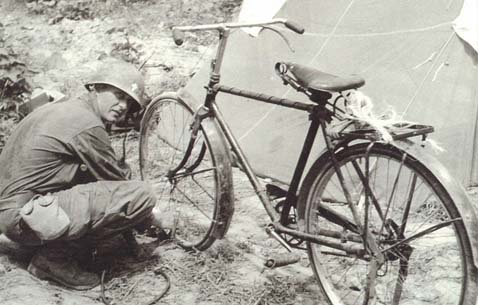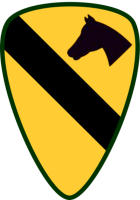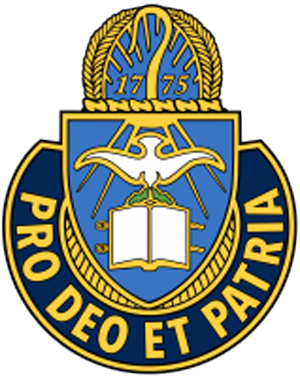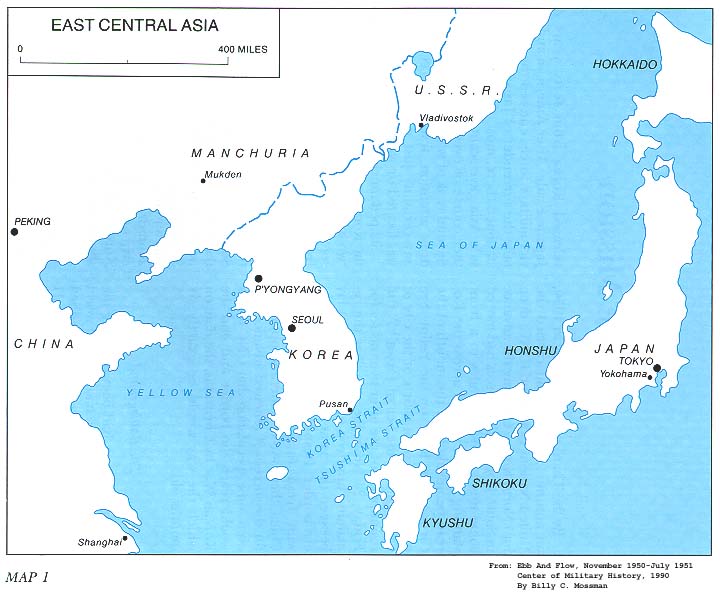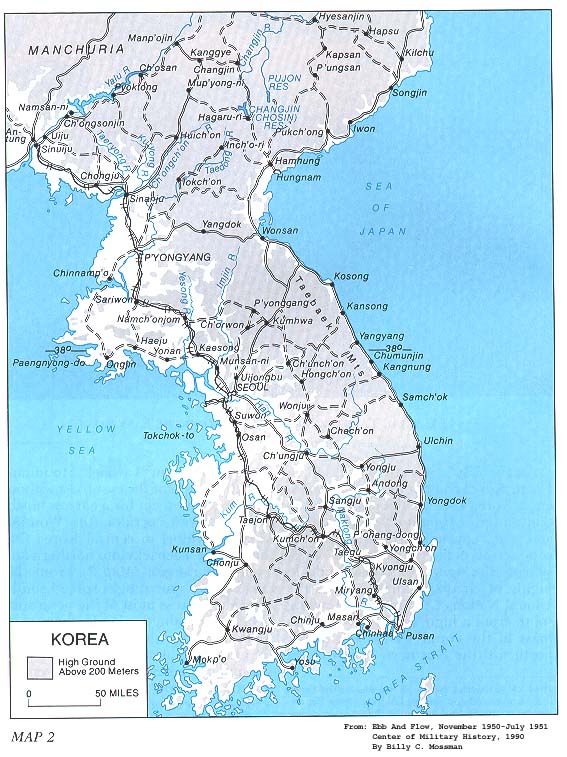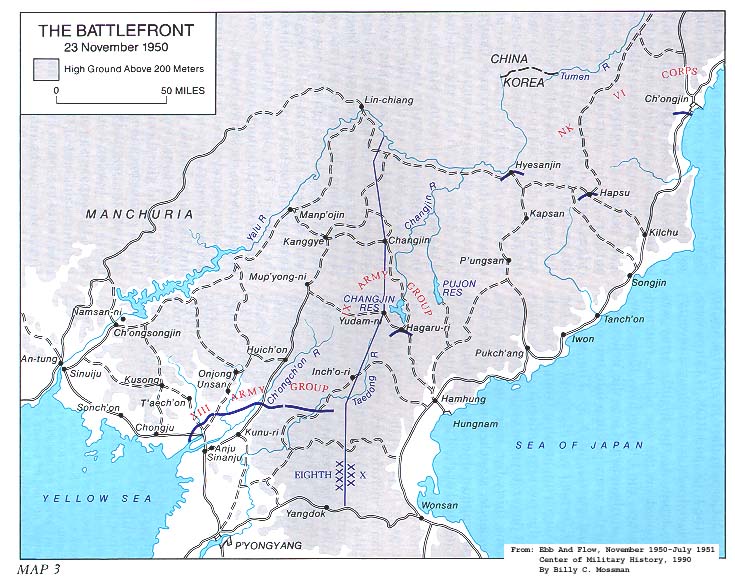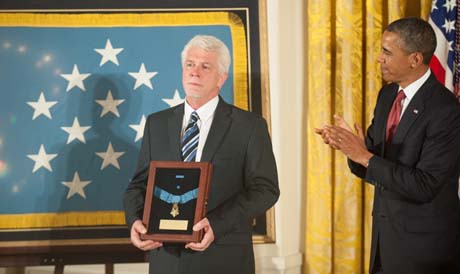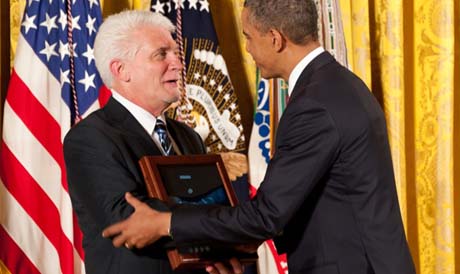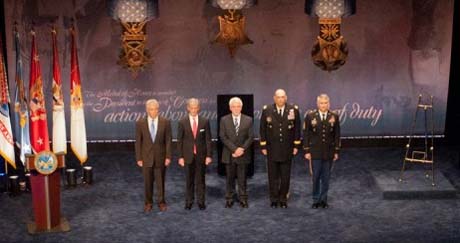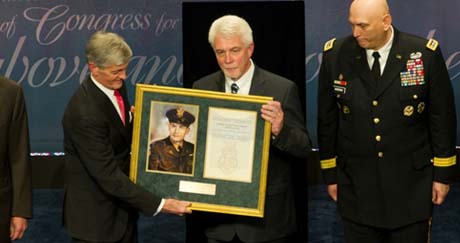Chaplain (Capt.) Emil Kapaun was born in 1916 on a rural farm in Kansas, to parents of German-Bohemian ancestry. He had one sibling, a brother named Eugene. As a boy, Emil learned to repair farm implements, a skill that would serve him well later in life, during his internment at a prisoner-of-war camp.
In 1936, Kapaun completed classics and philosophy study at Conception College and begans attending Kenrick Seminary and was ordained a Catholic priest in 1940. From 1943 to 1944, he served as an auxiliary Chaplain at the Army Air Base in Herington, Kansas and joined the U.S. Army Chaplain Corps in 1944. After a brief post in Camp Wheeler, Georgia, Ch. Kapaun served the remainder of World War II in the Burma and India Theater. On January 3, 1946 he was promoted to the rank of captain. Later in 1946, he separated from the Army and spent the next two years earning his advanced degree in education.
Chaplain Emil Kapaun fixes a flat on his bicycle in Korea, August 1950. Kapaun often rode this bike from location to location along the fighting lines to visit soldiers. (Photo courtesy Col. Raymond Skeehan)
In 1948, Kapaun decided to commission in the Army Chaplain Corps for the second time. He mobilized in support of the Korean War in 1950, and served as a chaplain with the 1st Cavalry Division in Japan and Korea before he was taken prisoner on November 2, 1950, during the Battle of Unsan. During the fight, which started on November 1, 1950, Kapaun moved repeatedly under enemy direct fire to rescue wounded from a no-man's land outside the battalion's perimeter. He also negotiated with the enemy for the safety of wounded Americans, physically intervened to stop an execution, and rejected multiple opportunities for escape and instead volunteered to stay and care for wounded. On August 2, 1950 Kapaun was awarded the Bronze Star Medal for heroism in action near Kumchon, where he rescued a wounded soldier despite intense enemy fire.
On November 1, 1950, Communist forces surround Chaplain Kapaun's outfit near Unsan. Chaplain Kapaun was captured by the North Korean army and its Chinese allies. Kapaun escaped when his captors were shot by allied Soldiers. But on November 2, 1950 Emil was captured a second time when he volunteered to stay behind with the wounded. Marched to POW camp, he continued to conduct ministry inside the POW camps.
Kapaun spent the next seven months in the Sambukol and Pyoktong prison camps, in what is now the Democratic People's Republic of Korea. With disregard for his own safety and comfort, Ch. Kapaun tended to the sick and wounded, scoured for food, built fires against guards' commands, and fashioned iron sheet vessels to launder the clothing of the wounded and purify drinking water. He also led prayers and spiritual services for the POWs, at the risk of punishment. For his outspoken resistance, Ch. Kapaun was feared by the guards and revered by his fellow POWs. Upon return, Pyoktong prison survivors told stories of Ch. Kapaun's courage, compassion, and spirit. They credited him with saving their lives, and hundreds more, before eventually succumbing to his own wounds and prison maltreatment. Ch. Kapaun died in Pyoktong on May 23, 1951.
In addition to the Medal of Honor, Ch. Kapaun's military awards include the Distinguished Service Cross; Bronze Star Medal with "V" Device; Legion of Merit; Prisoner of War Medal; Asiatic-Pacific Campaign Medal with one Bronze Service Star for Central Burma Campaign; World War II Victory Medal; Army of Occupation Medal with Japan Clasp; Korean Service Medal with two Bronze Service Stars; National Defense Service Medal; and United Nations Service Medal.
Kapaun is also lauded by people of the Roman Catholic faith. In 1993, Kapaun received the title of "Servant of God" from the Roman Catholic Church, the second of four stages to being named a saint. The Vatican continues investigations into possible canonization.


